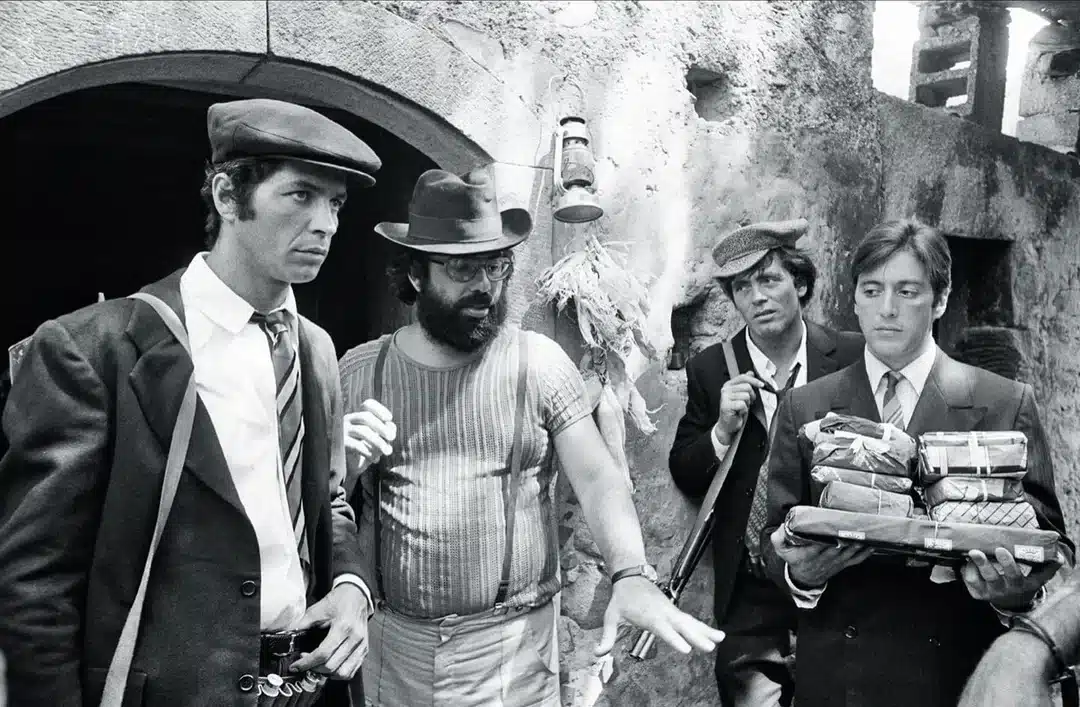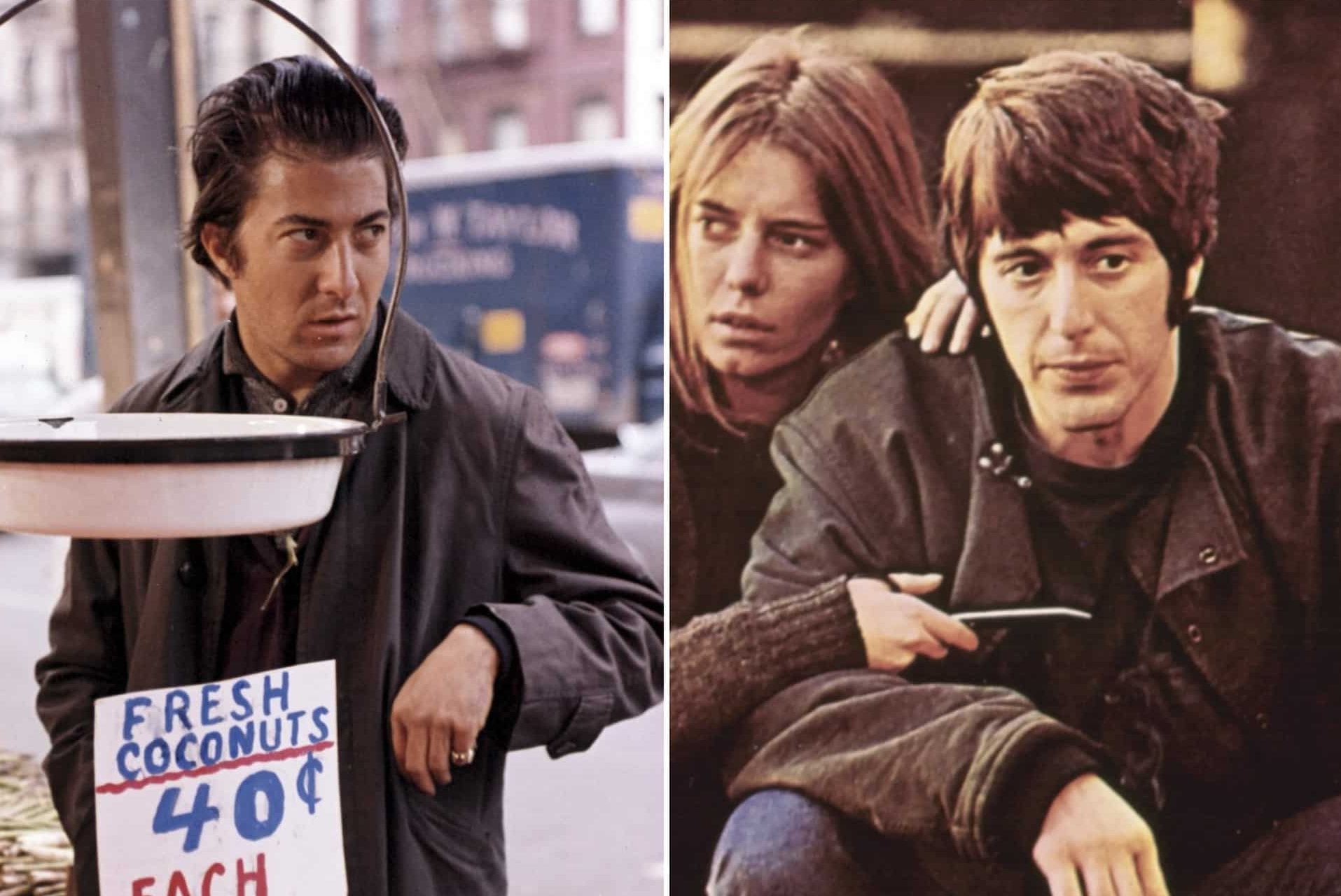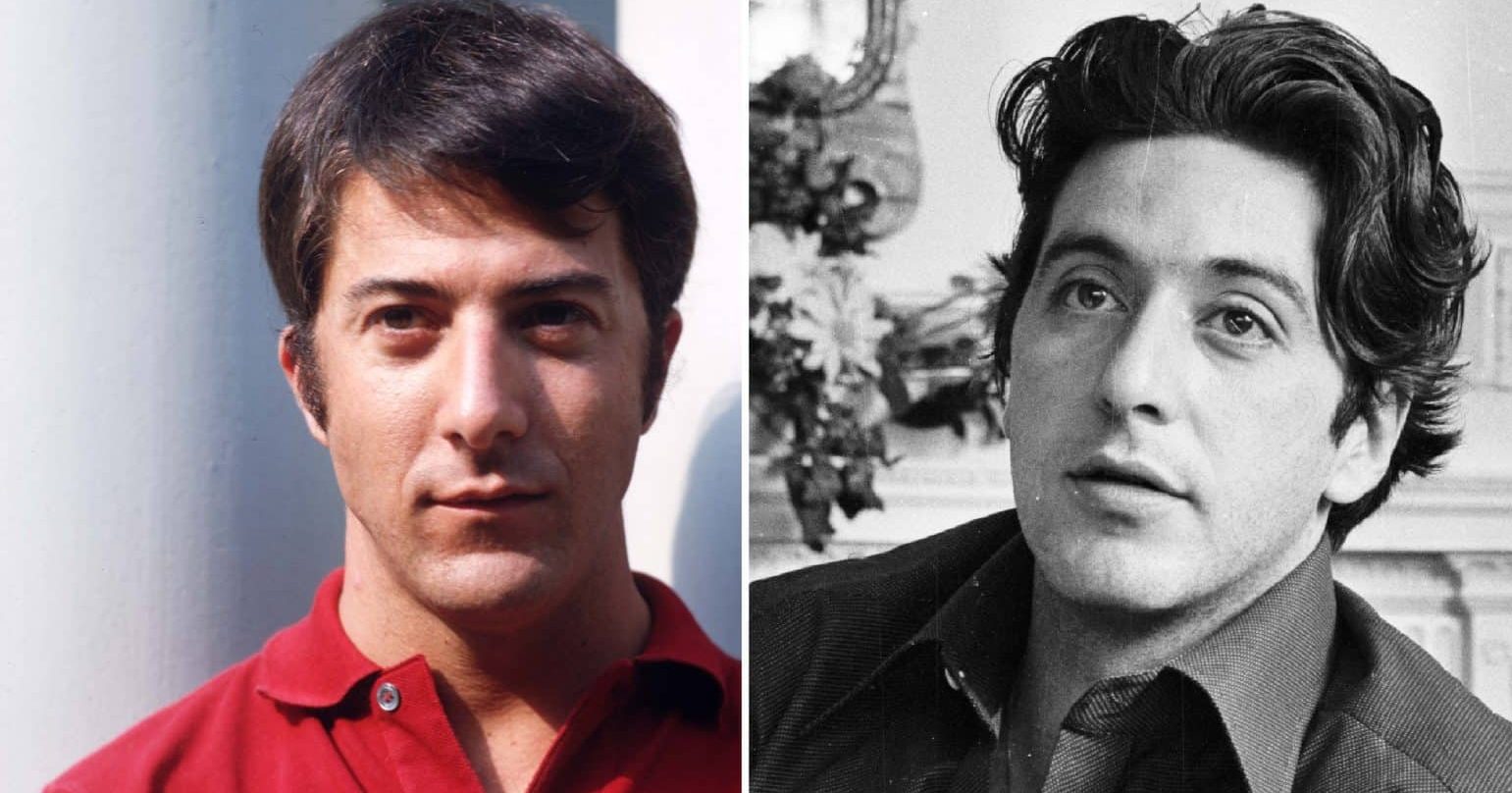When casting the main characters in his 1972 adaptation of Mario Puzo’s The Godfather, director Francis Ford Coppola faced many battles against studio executives. One of these was the matter of who should be cast in the lead role of Michael Corleone: an unknown, as Coppola preferred, or an established name who could guarantee the studio ticket sales?
A bigger star than Al Pacino at the time thanks to his roles in The Graduate and Midnight Cowboy, Dustin Hoffman circled the role of Michael Corleone in The Godfather before Pacino landed it. Coppola, however, always wanted Pacino – and when The Godfather made that young actor a star, it only intensified an already established rivalry between Pacino and Hoffman.
“His presence seemed to radiate danger”

Marlon Brando was one of the first actors to be cast in The Godfather, an ambitious crime epic that would see Francis Ford Coppola lock horns with Paramount executives countless times. In February 1971, Coppola took a trip with Brando to Sicily, and on this journey they cast a whole range of smaller roles, including Apollonia (Simonetta Stefanelli), Don Tommasino (Corrado Gaipa), Fabrizio (Angelo Infanti) and Calo (Franco Citti).
Yet when he returned to the USA, Coppola still hadn’t picked his Michael Corleone, even though filming was due to begin within weeks.
Michael Corleone was a challenging figure to cast. In Puzo’s novel, the character is described as “handsome in a delicate way”: “He did not have the heavy, Cupid-shaped face of [his siblings], and his jet black hair was straight rather than curly. His skin was a clear olive-brown that would have been called beautiful in a girl.”
“Michael was not tall or heavily built but his presence seemed to radiate danger,” the novel states. Studio executives at Paramount were keen to cast a hot young star in the role, with the likes of Warren Beatty and Robert Redford considered. Among the actors to show a serious interest in the role was Dustin Hoffman.
“Jack Nicholson, Al Pacino, Robert De Niro…owe their careers to Hoffman”

At the time, Hoffman ticked the box as both critically acclaimed actor and established box office attraction. The Graduate (1967) and Midnight Cowboy (1969) – both major hits with audiences – had made Hoffman a star, while his roles in both had earned him Oscar nominations for Best Actor.
Hoffman was not a typical Hollywood celebrity: he was considered less conventionally attractive than the stars of previous decades, while he had a slow start in the industry, and was already in his 30s by the time of his breakout performance in The Graduate.
Before his Hollywood breakthrough, Hoffman roomed with Robert Duvall, and the pair hung out with the similarly pre-fame James Caan and Gene Hackman in New York City. “The idea that any of us would do well in films simply didn’t occur to us,” Hackman has since commented. “We just wanted to work.” Duvall was later cast in The Godfather as one of Michael’s brothers, as was Caan; naturally, Hoffman would catch wind of a film in which his old friends had already been cast.
Hoffman’s smash success in The Graduate changed the game for Hollywood male leads. “Jack Nicholson, Al Pacino, Robert De Niro, Dennis Hopper all owe their careers, in a way, to the door opened by Hoffman,” one journalist has noted. “Men could look different, they could have foreign backgrounds or ethnic names; they could be short, dark or angry – and all of this could be sexy.”
As this new kind of Hollywood actor emerged in the late 60s and early 70s, two men in particular embarked upon a brief professional rivalry: Hoffman and Pacino, the latter of whom would ultimately win the role of Michael Corleone, and who would early in his career be unfavourably compared to Hoffman.
“I actually thought I was watching Hoffman”

In 1966, Pacino and Hoffman were both nominated for Obies (Off-Broadway Theater Award), with Hoffman taking the prize for his work on The Exhaustion of Our Son’s Love. Around this time, the two were often compared to and occasionally confused for one another, with both moving in the same circles due to their shared connection to the Actors Studio.
When Pacino made his debut as a lead in a movie, in 1971’s The Panic in Needle Park, some critics accused him of aping Hoffman’s performance in 1969’s Midnight Cowboy. The New Yorker’s Pauline Kael would go so far as to suggest that Pacino seemed to “hero-worship” Hoffman in his acting style.
(Kael later commented that Pacino seemed “indistinguishable” from Hoffman in 1973’s Serpico: “He uses a high, nasal voice and wrangling New York speech, and as he got longer-haired and more bearded, I began to lose track of who it was under the foliage; there were scenes in which I actually thought I was watching Hoffman.”)
According to the autobiography Dustin Hoffman: Hollywood’s Antihero, Hoffman was actually offered the role of Michael Corleone in 1971, but he had to turn it down because he was busy working on Bob Fosse’s Lenny (1974). (Pacino would later describe the Lenny Bruce biopic as “the only movie I wished I could have done.”)
However, in The Godfather Legacy, Harlan Lebo’s book about the making of the film, it’s said that “Hoffman expressed interest, but an audition never materialized.” Whether or not the studio ever seriously offered Michael Corleone to Hoffman, Coppola was always determined to get Al Pacino for the role.
“I thought he might be going through a mini-breakdown or something”

When Pacino first received a phone call from Coppola about the lead in The Godfather, he didn’t believe it. “I thought, well, he might be going through a mini-breakdown or something,” Pacino later said. “How did they give him The Godfather?… OK. Humor the guy. And he wanted me to do Michael. I thought, OK, I’ll go along with this. I said, yes, Francis, good. You know how they talk to you when you’re slipping? They say, ‘Yes! Of course! Yes!’ But he wasn’t. It was the truth. And then I was given the part.”
One screen test editor, Marcia Lucas (wife of George Lucas), also felt that Pacino was something special, and noted to Coppola: “[Pacino] undresses you with his eyes.” It would later emerge that Pacino had turned up to his screen test hungover, and hadn’t even learned his lines.
Coppola battled with Paramount executives to have Pacino in the role, and ultimately won. It would be a dream part for the young star, winning him global recognition, and his first Oscar nomination.
Even as he made his own name in Hollywood, however, Pacino found it hard to escape the shadow of Hoffman. “Pacino’s sudden emergence as a movie star is reminiscent of Dustin Hoffman’s in The Graduate,” one Life journalist wrote after The Godfather made Pacino a household name.
“Yeah, we’re all the same guy”

Initially, Pacino resented the constant comparisons to Hoffman. In response to Kael’s comments about his allegedly copying Hoffman, Pacino in a 1979 Playboy interview said: “[Was] that after she had the shot glass removed from her throat?'”
The professional rivalry between Pacino and Hoffman also continued post-Godfather. In 1974, Pacino was filming Dog Day Afternoon when he fell sick as a result of alcoholism and exhaustion. Hoffman was reportedly ready to step in and take the role, at which point Pacino made a hurried recovery.
In later years, Pacino developed more of a sense of humour about being compared to his fellow New Hollywood actors. In a 1992 GQ profile, it was reported that Pacino joked about confusion between him and Robert De Niro, his friend and Godfather Part II co-star. Referring to himself as “Al De Niro”, Pacino reportedly told one Hollywood screenwriter: “Yeah, we’re all the same guy.”

